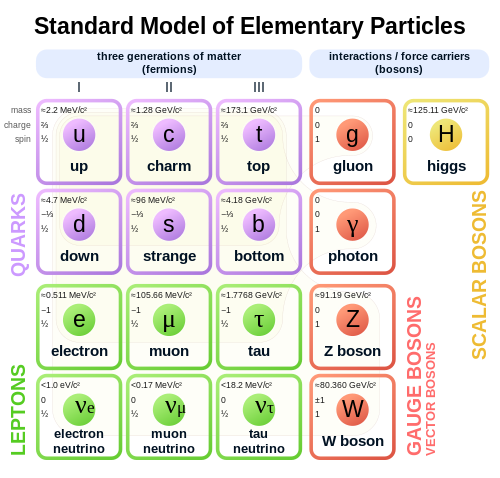(font CERN)At 0:38 CEST this morning, the LHC shift crew declared ‘stable beams’ as two 4 TeV proton beams were brought into collision at the LHC’s four interaction points. This signals the start of physics data taking by the LHC experiments for 2012. The collision energy of 8 TeV is a new world record, and increases the machine’s discovery potential considerably.
- Press Release: LHC physics data taking gets underway at new record collision energy of 8TeV
- Video: CERN News - Physics restarts in the LHC at new record energy
- CERN: LHC bate novo recorde mundial de energia
The Standard Model of particle physics is a theory concerning the electromagnetic, weak, and strong nuclear interactions, which mediate the dynamics of the known subatomic particles.
Still, the Standard Model falls short of being a complete theory of fundamental interactions because it does not incorporate the physics of dark energy nor of the full theory of gravitation as described by general relativity. The theory does not contain any viable dark matter particle that possesses all of the required properties deduced from observational cosmology. It also does not correctly account for neutrino oscillations (and their non-zero masses). Although the Standard Model is believed to be theoretically self-consistent, it has several apparently unnatural properties giving rise to puzzles like the strong CP problem and the hierarchy problem.
Nevertheless, the Standard Model is important to theoretical and experimental particle physicists alike. For theorists, the Standard Model is a paradigmatic example of a quantum field theory, which exhibits a wide range of physics including spontaneous symmetry breaking, anomalies, non-perturbative behavior, etc. It is used as a basis for building more exotic models which incorporate hypothetical particles, extra dimensions and elaborate symmetries (such as supersymmetry) in an attempt to explain experimental results at variance with the Standard Model, such as the existence of dark matter and neutrino oscillations. In turn, experimenters have incorporated the Standard Model into simulators to help search for new physics beyond the Standard Model.
Recently, the Standard Model has found applications in fields besides particle physics, such as astrophysics, cosmology, and nuclear physics.
(in Wikipedia)
You can read another posts about particles and Higgs in my blog. Now, watch this videos about Standard Model:



No comments:
Post a Comment